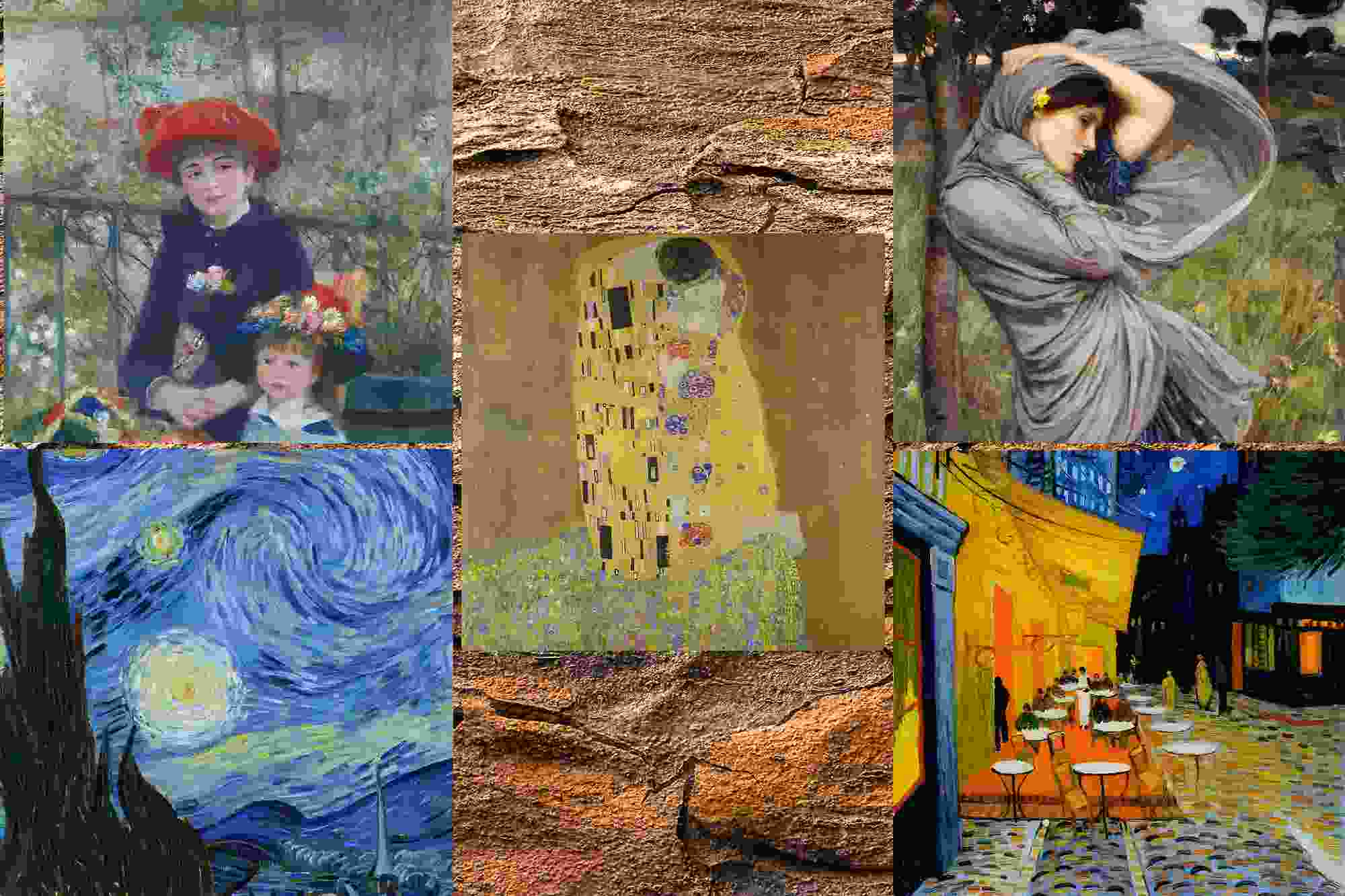The Rich Tapestry of American Art: American art has a unique story, woven from the diverse threads of its cultural, historical, and geographical influences. This article explores the pivotal artists of the 19th and 20th centuries, whose works not only defined their eras but also shaped the course of American art history.
Table of Contents
The 19th Century: Foundations and Innovations:
Early 19th Century – The Roots of American Art: The early 19th century saw the emergence of artists like Thomas Cole and Asher B. Durand, who pioneered the Hudson River School, known for its romantic portrayal of America’s natural landscapes.
Thomas Cole’s ‘The Oxbow’ (1836): A masterpiece of naturalism and a symbol of American pride, ‘The Oxbow’ epitomizes the essence of American landscape painting in this era.
The Emergence of Genre Painting: Genre painting, depicting ordinary life, was popularized by artists like George Caleb Bingham with his work ‘Fur Traders Descending the Missouri’ (1845).
Winslow Homer – A Versatile Genius: Winslow Homer, renowned for his rural scenes, became a prominent figure with works like ‘The Veteran in a New Field’ (1865), capturing the post-Civil War American spirit.
Mary Cassatt and Impressionism: Mary Cassatt, often associated with Impressionism, brought a unique perspective to this movement with works like ‘The Child’s Bath’ (1893), showcasing intimate mother-child scenes.
The Turn of the Century: American Art’s Golden Age
The Advent of Realism: The late 19th century saw a shift towards Realism, with artists like Thomas Eakins leading the way. His work ‘The Gross Clinic’ (1875) is a seminal piece depicting the intersection of science and art.
American Impressionism – Childe Hassam: Childe Hassam brought a distinct American flavor to Impressionism. His ‘Allies Day, May 1917’ (1917) captures the patriotic fervor of the time.
The Ashcan School – Portraying Urban Life: The Ashcan School, led by artists like John Sloan, depicted the gritty reality of urban life. Sloan’s ‘McSorley’s Bar’ (1912) is a quintessential example.
The 20th Century: A Diverse Canvas
The Harlem Renaissance and Aaron Douglas: The Harlem Renaissance was a cultural awakening, and Aaron Douglas’s ‘Aspects of Negro Life’ (1934) series beautifully encapsulates its spirit.
Georgia O’Keeffe and American Modernism: Georgia O’Keeffe, a pioneer of American Modernism, is best known for her large-format paintings of natural forms, like ‘Red Canna’ (1924).
Edward Hopper’s Nostalgic Realism: Edward Hopper captured the solitude of modern life in paintings like ‘Nighthawks’ (1942), which has become an icon of American culture.
The Regionalism of Grant Wood: Grant Wood’s paintings, a central figure in the Regionalist movement, are best known for their depiction of the rural American Midwest. His iconic work ‘American Gothic’ (1930) became a symbol of regional and national identity. Grant Wood’s paintings often contain a blend of realism and satire, portraying rural American life with a level of detail and affection that is both endearing and thought-provoking. His works offer a window into the American experience during the early 20th century, reflecting the values, traditions, and social issues of the time.
Abstract Expressionism and Jackson Pollock: The post-World War II era saw the rise of Abstract Expressionism, with Jackson Pollock’s drip paintings like ‘Number 1, 1949’ becoming emblematic of this movement.
Pop Art and Andy Warhol: Andy Warhol revolutionized the art world with his Pop Art, using mass culture and consumerism as themes. His ‘Marilyn Diptych’ (1962) is one of the most famous pieces of this genre.
The Influence of Norman Rockwell: Norman Rockwell’s illustrations, like ‘Freedom from Want’ (1943), captured the essence of everyday American life and had a significant impact on popular culture.
The Legacy and Influence
Cross-Cultural Influences and Evolving Narratives: The 19th and 20th centuries were marked by a constant exchange of artistic ideas, reflecting America’s evolving social and cultural narrative.
Art Reflecting History: These centuries saw art transition from romantic landscapes to gritty urban scenes, from abstract expressions to pop culture reflections, mirroring America’s historical journey.
The Role of Women and Minority Artists: Women and minority artists played crucial roles in shaping the American art scene, often challenging societal norms and pushing artistic boundaries.
Art as a Tool for Social Change: Many artists used their work as platforms for social commentary and change, influencing public opinion and policy.
The Global Impact of American Art: The unique styles and themes of American art have significantly influenced the global art scene, cementing its place in world art history.
Reflecting on the expansive canvas of American art from the 19th and 20th centuries, we see a vivid portrayal of a nation’s journey through change and continuity. The art of this period not only captures the essence of American life and thought but also stands as a testament to the enduring spirit of creativity and exploration. As we appreciate the contributions of these pioneering artists, we also recognize that the story of American art is an ongoing narrative, continually enriched by new voices and visions, forever capturing the heartbeat of a nation in transition.
Please explore our site for more exciting content if you liked dis article.





